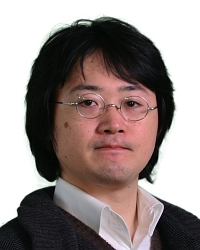TR2025-069
Rateless Deep Joint Source Channel Coding for 3D Point Cloud
-
- , "Rateless Deep Joint Source Channel Coding for 3D Point Cloud", IEEE Access, DOI: 10.1109/ACCESS.2025.3546514, Vol. 13, pp. 39585-39599, June 2025.BibTeX TR2025-069 PDF
- @article{Fujihashi2025jun,
- author = {Fujihashi, Takuya and Koike-Akino, Toshiaki and Watanabe, Takashi},
- title = {{Rateless Deep Joint Source Channel Coding for 3D Point Cloud}},
- journal = {IEEE Access},
- year = 2025,
- volume = 13,
- pages = {39585--39599},
- month = jun,
- doi = {10.1109/ACCESS.2025.3546514},
- issn = {2169-3536},
- url = {https://www.merl.com/publications/TR2025-069}
- }
- , "Rateless Deep Joint Source Channel Coding for 3D Point Cloud", IEEE Access, DOI: 10.1109/ACCESS.2025.3546514, Vol. 13, pp. 39585-39599, June 2025.
-
MERL Contact:
-
Research Areas:
Abstract:
To enable untethered volumetric services, one of the primary challenges lies in reconstructing a high-quality 3D point cloud for each user, despite variations in channel conditions and bandwidth availability. Conventional digital point cloud coding approaches, such as tree-based or graph-based methods, reduce transmission data effectively; however, they are prone to quality degradation due to lossy compression and entropy coding, especially under fluctuating channels and limited bandwidth. To address these limitations, we propose a novel scheme inspired by deep joint source-channel coding (DJSCC). DJSCC compresses the 3D point cloud into coded symbols, which are then decoded via a graph auto-encoder (GAE) architecture. Additionally, the coded symbols are directly mapped to transmission symbols through analog modulation, allowing the point cloud quality to adapt dynamically to each user’s channel conditions. Unlike existing DJSCC schemes, our proposed scheme includes a non-uniform dropout mechanism that provides a rateless feature, enabling the point cloud quality to enhance based on the available bandwidth progressively. Experimental results with a point cloud dataset demonstrate that the proposed scheme mitigates quality degradation due to variations in channel quality and bandwidth better than the existing DJSCC scheme. Moreover, the proposed scheme shows improved generalization performance, leading to superior point cloud quality in narrow-band scenarios.
